Affiliate links on Android Authority may earn us a commission. Learn more.
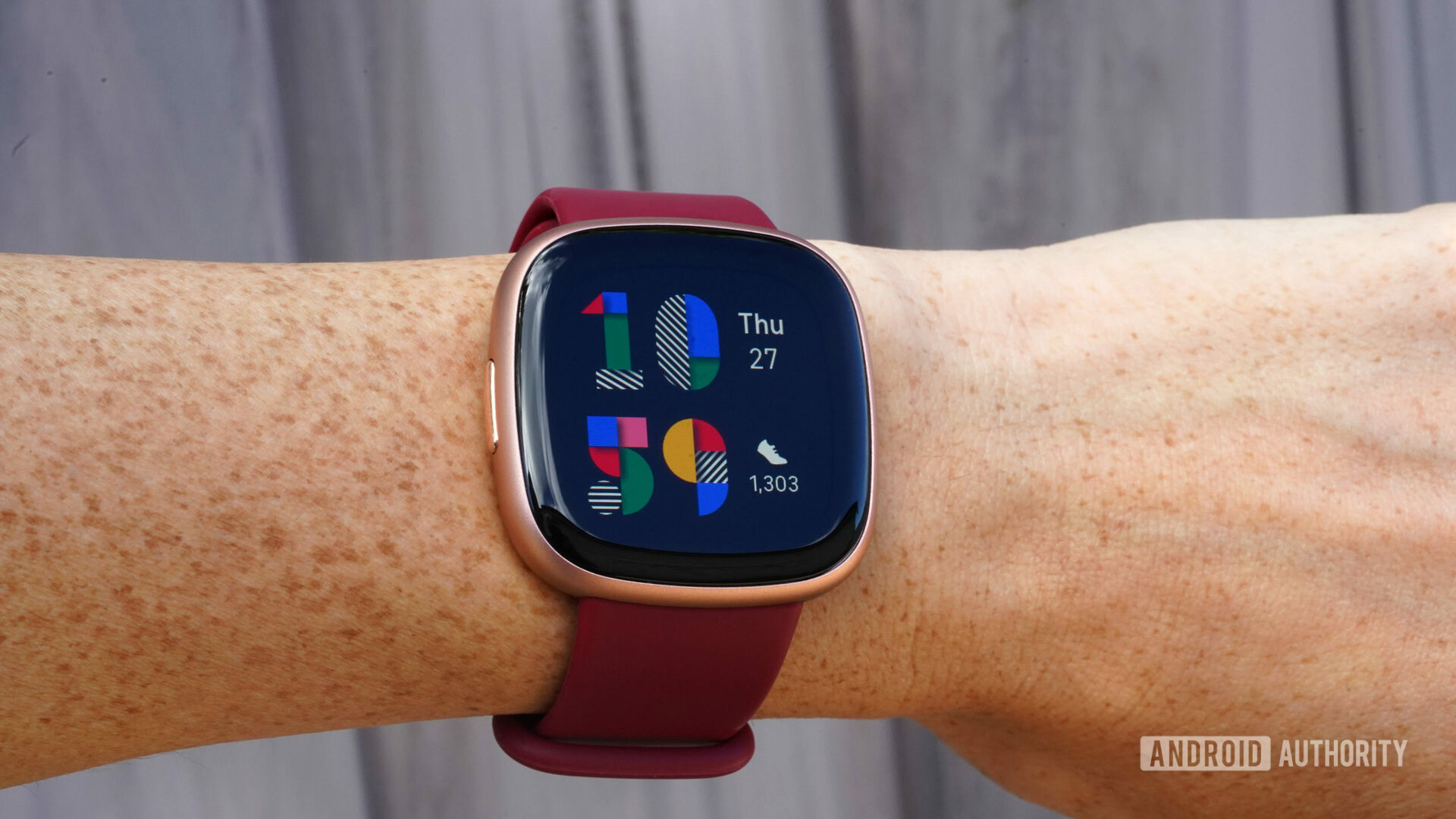
Fitbit Versa 4
What we like
What we don't like
Fitbit Versa 4
Ever since it first launched, we consistently promoted the Fitbit Versa 3 as the best Fitbit device for most users, and, for better or worse, that still may be the case. The Fitbit Versa 4 brings some updates to the line, but it also drops important features that made the previous model such an attractive buy. With other smartwatch companies continuing to raise the bar each year, can Google-owned Fitbit keep up? Find out in this Fitbit Versa 4 review.
Update, March 2023: Added details about the arrival of Google Maps and Google Wallet on the Fitbit Versa 4.
What you need to know about the Fitbit Versa 4
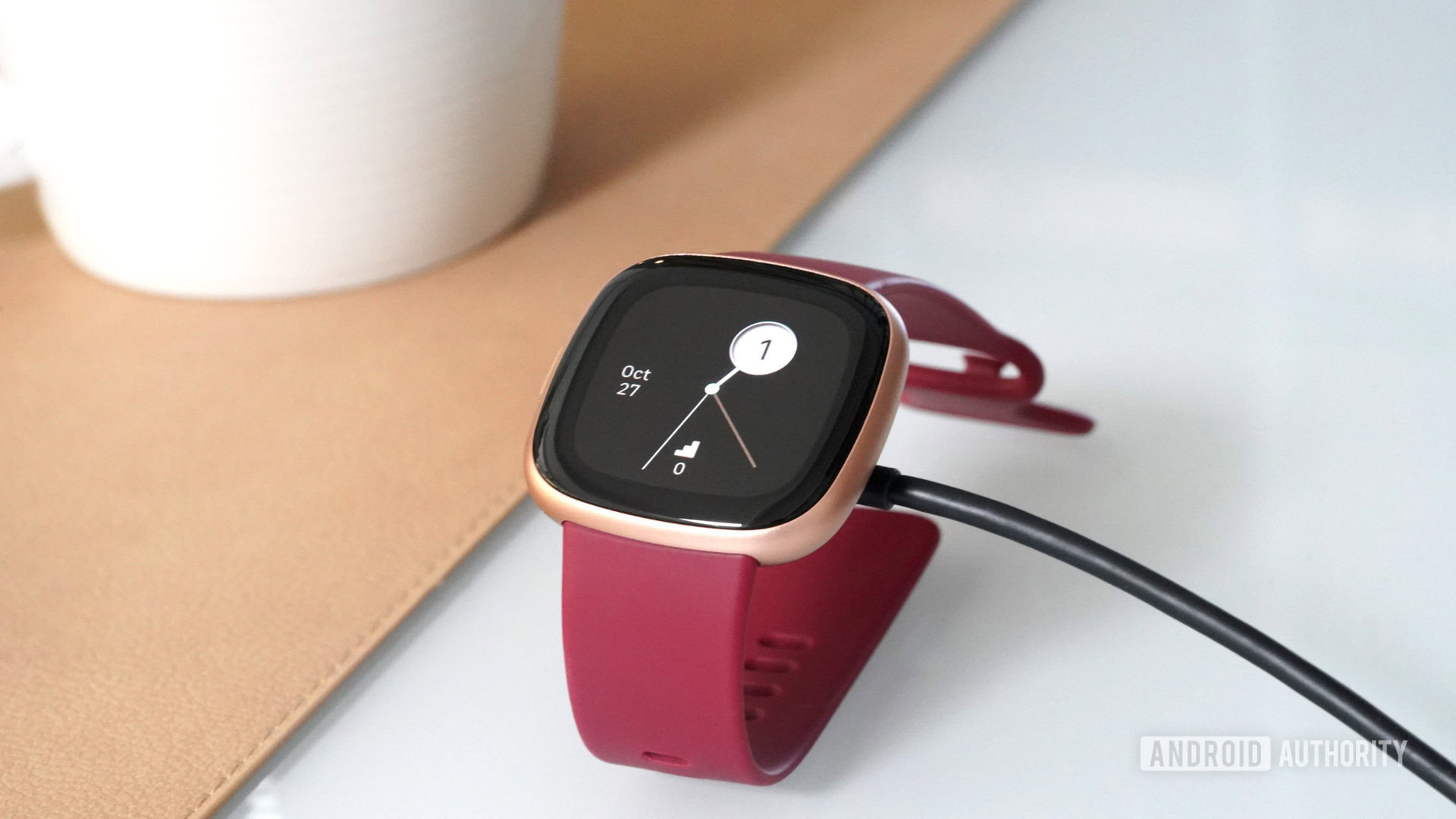
- Fitbit Versa 4: $229 / £199 / €229
The Fitbit Versa 4 launched on August 23, 2022 alongside the Fitbit Sense 2. Both of Fitbit’s 2022 smartwatches pack notable design tweaks as well as some significant changes to their internal features. As before, the Sense 2 remains the highest-end Fitbit available while the Versa 4 delivers a pared-down experience for less. However, if you are willing to forgo the pricier line’s advanced health sensors (for electrocardiogram, electrodermal activity, and skin temperature readings), the budget-friendly Versa 4 has plenty to offer. It’s also a far less expensive option than the Google Pixel Watch, which transposes some, but not all, of Fitbit’s features into a Wear OS smartwatch.
With a lighter, thinner case and the addition of a crowd-pleasing physical button (finally!), the Versa 4 is more comfortable and user-friendly than its predecessor. It also boasts an upgraded processor and a refreshed Fitbit OS. The software features a pseudo-Wear OS aesthetic, plus 20 additional exercises for greater fitness tracking diversity.
At its core, the Versa line still offers the same basic activity tracking, including access to Fitbit’s reliable companion app. The Fitbit Versa 4 tracks users’ steps, SpO2, heart rate, VO2 Max, Active Zone Minutes, and menstrual cycles, plus offers built-in GPS for recording outdoor routes. The Versa 4 also auto-tracks certain exercises so you never miss a stat (including walking, running, elliptical, outdoor biking, and swimming). Overnight, the Versa 4 will count your Zs and analyze your rest via Fitbit’s robust sleep tracking suite.
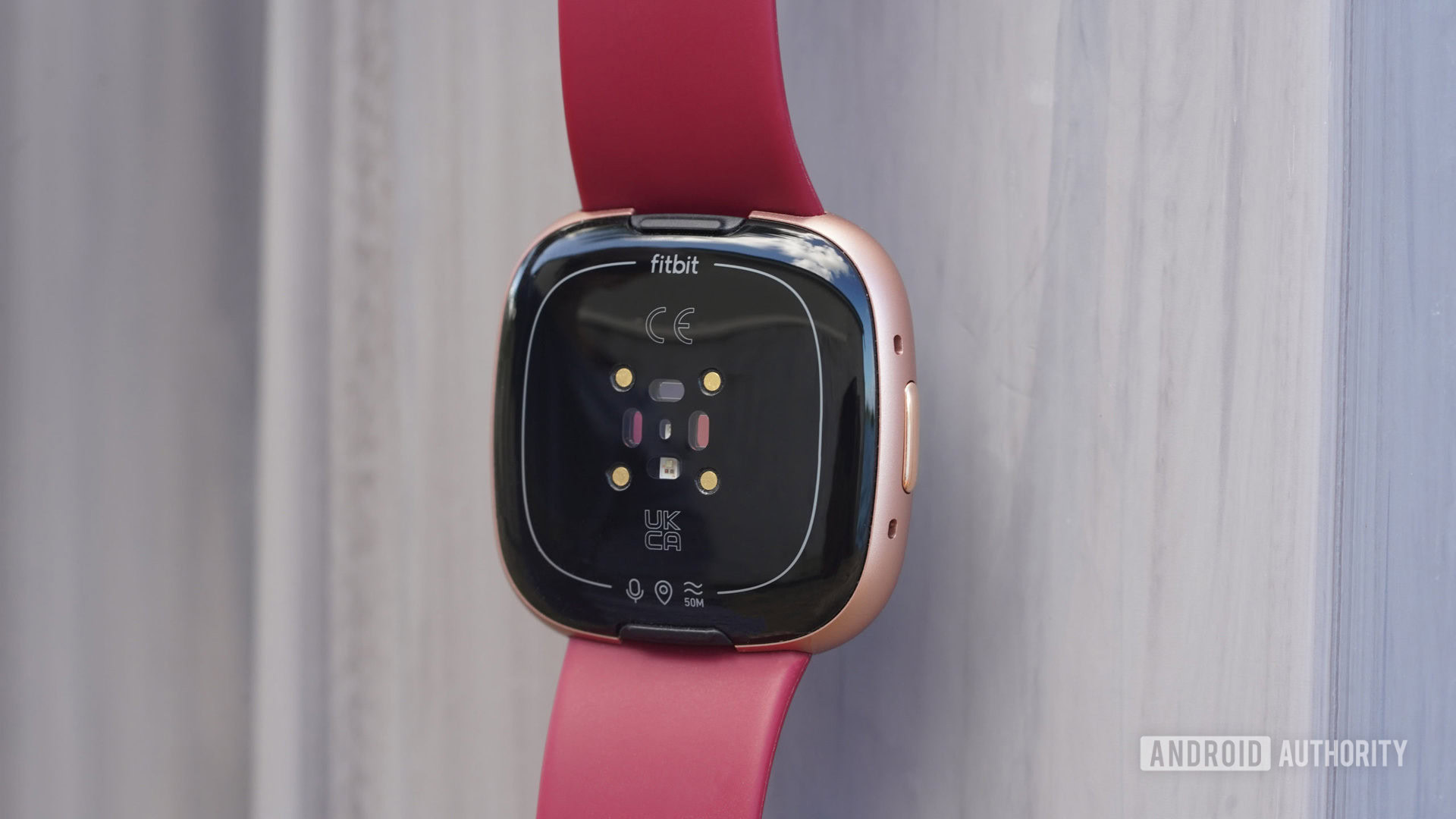
On the smartwatch front, the Versa 4 supports Google Maps, Google Wallet, and Fitbit Pay as well as Amazon Alexa voice interactions, plus call and text notifications. Users can even receive phone calls right on their wrists using the Versa 4’s built-in microphone and speaker. Google Assistant support is conspicuously absent.
The Fitbit Versa 4 is a pared-down version of the Sense 2, with fewer health sensors but plenty of fitness tracking tools.
As always, users will get the most out of their Fitbit device with Fitbit Premium. The top perks of the subscription service include deeper sleep insights and a Daily Readiness Score. To that end, the Versa 4 comes with six free months of Fitbit Premium for new and existing members. You can purchase a Versa 4 from Fitbit.com, the Google Store, and many other third-party retailers. Out of the box, shoppers can choose a graphite case with a black band, a platinum case with a Waterfall blue band, or a Copper Rose case with a band in Pink Sand or Beet Juice.
What’s good?
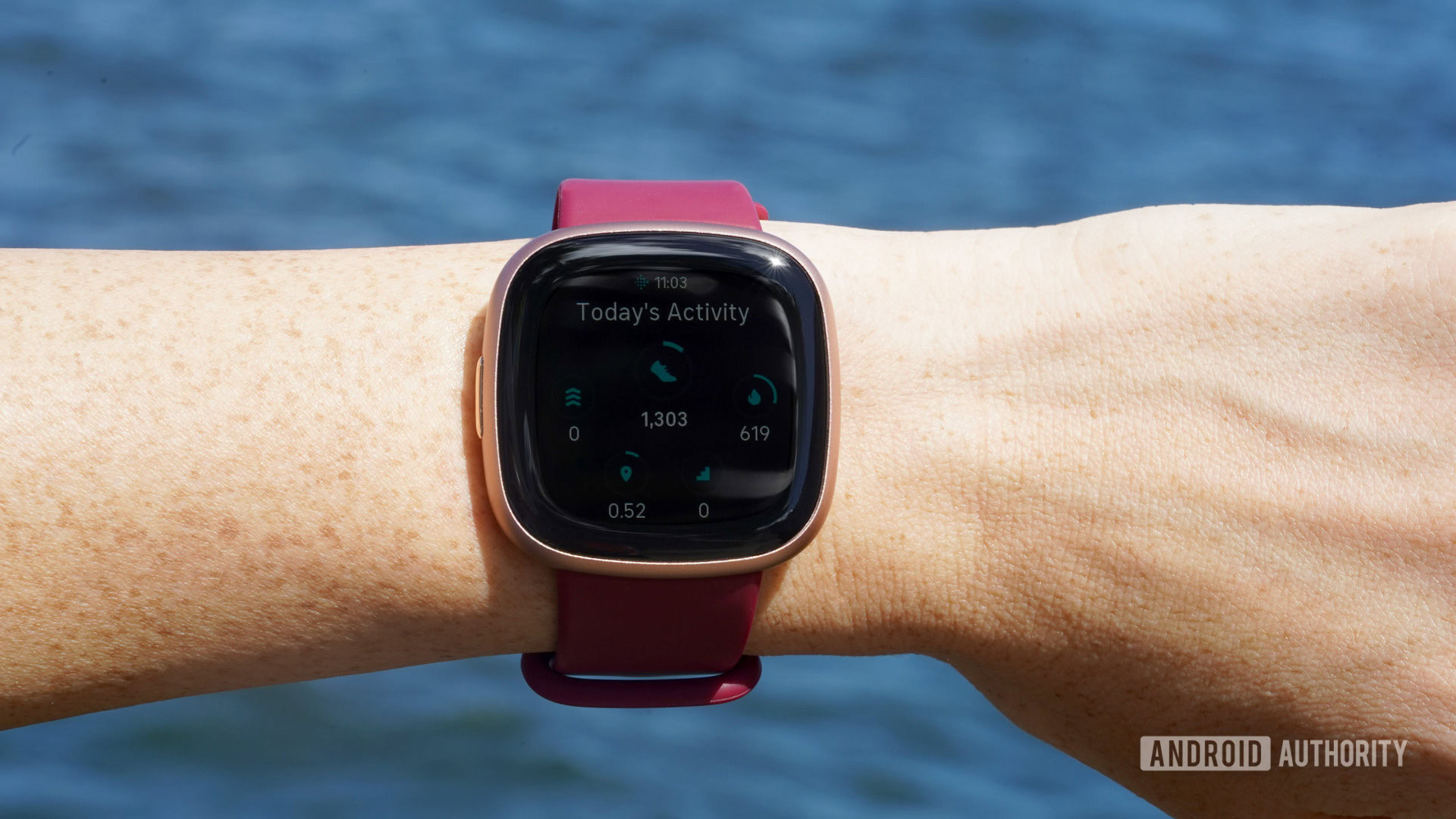
To its credit, the Fitbit Versa 4 gets a lot right. The overhauled design features a 15% lighter watch case that’s plenty comfortable for all-day wear. The build is also considerably thinner, and, according to Fitbit, lowers the device’s center of gravity for a more natural fit. That’s all without sacrificing a single millimeter of the bright, colorful AMOLED display users are used to on this lineup. Still a reliable touchscreen with an optional always-on mode, the Versa 4’s display performed well on sunny runs, in my dingy attic, and in every lighting situation in between.
The Versa 4 continues to utilize the same durable band materials as the Versa 3. The strap I tested was soft to the touch but stood up well to sweat and salt water. Like most rubber sport bands, it was also easy to clean after a particularly dusty venture into my storage space. As for the colorways, I wore the Copper Rose and Beet Juice combo for this review. While it isn’t a style I would have personally chosen, I actually found the tones and saturation well-balanced (plus, I love beet juice and took the name as a sign to stock up).
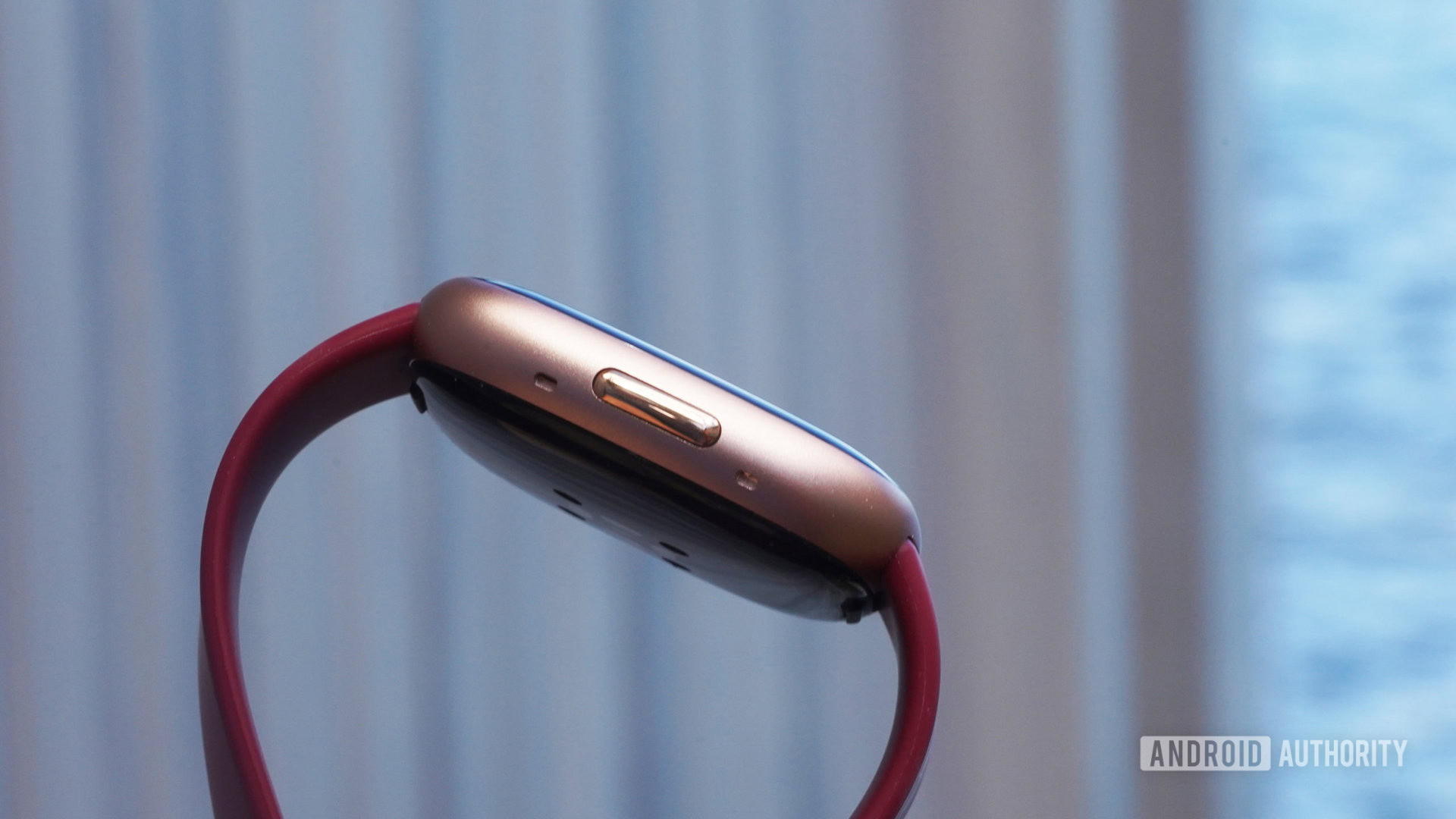
The number one stand-out improvement to the Versa 4’s build is the restitution of a physical button. Anyone who upgraded from a Versa 2 to a Versa 3 will remember the divisive removal of the line’s single button. Users instead were left to contend with a finicky capacitive groove that was, at best, tricky, and, at worst, useless. The Versa 4 brings back the tangible with a single button for improved interaction.
The Versa 4's controls are simple and intuitive thanks to simple gestures and the return of a physical button.
Functionally, the button serves the same general purpose it always has of supplementing the device’s touchscreen for user interaction. From your watch screen, a short press will open your app library, with the most recently used apps listed first. From any other screen, a short press will return your device to the watch face. You can customize a long press to open a particular app, start an activity, or launch your voice assistant. A quick double press opens a shortcut screen to access Alexa, quick settings, notifications, or Fitbit Pay. Beyond the button, you can swipe down to reach quick settings or swipe up to check your notifications. Finally, swiping left or right will scroll through your tiles.
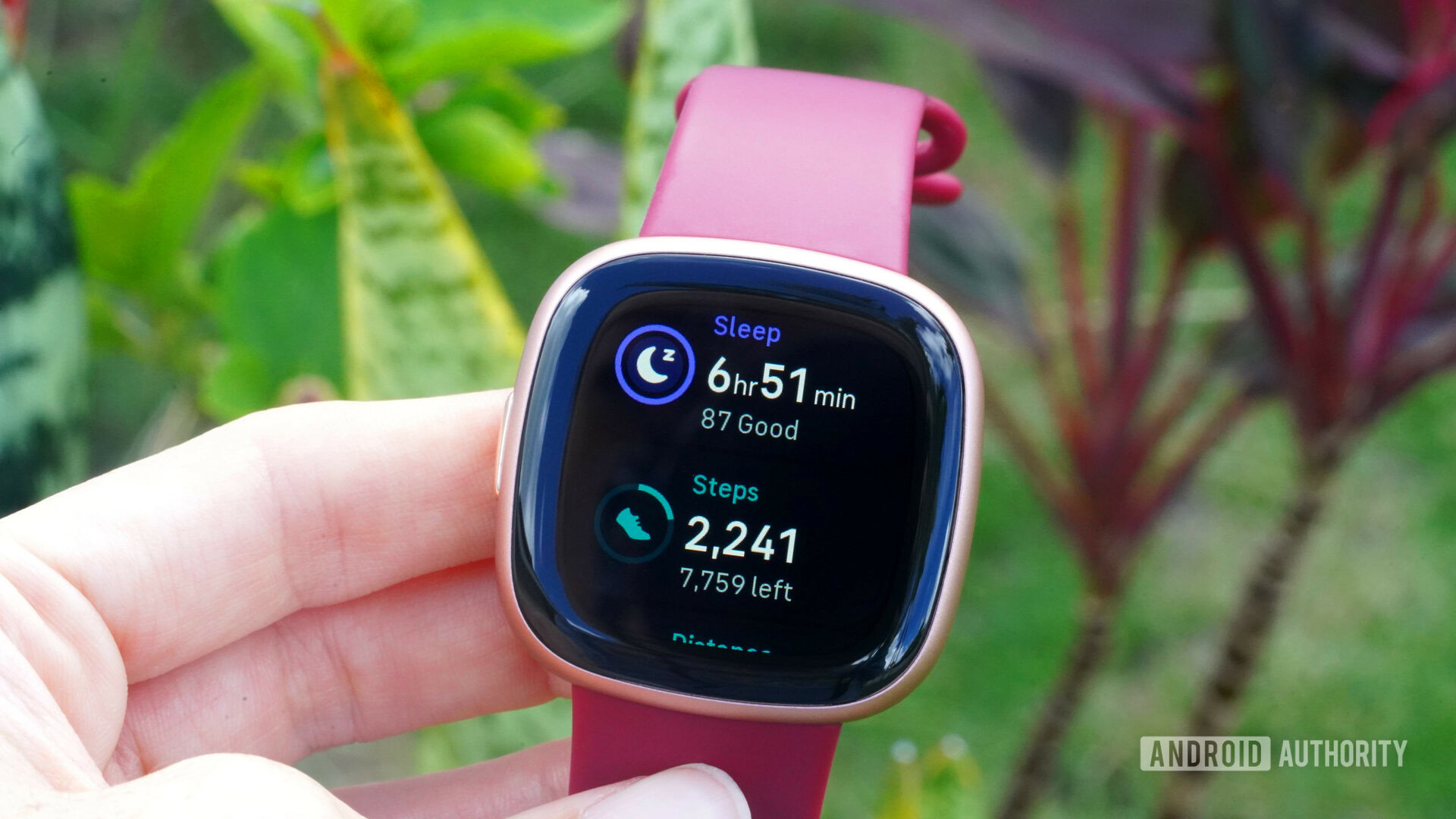
All-in-all, navigation is very simple. You can rearrange your tiles to manage the order they appear or to add or delete any you’re not using. Likewise, within the Fitbit Today app, you can reorder your stats to keep priorities at the top. You can also hide a stat if you simply don’t need to see it on your wrist. For example, I like having my Sleep Score, Steps, and Active Zone Minutes towards the top, while I don’t care as much about floors climbed.
Of course, all of this tapping, swiping, and scrolling is greatly improved by the Versa 4’s upgraded processor. Throughout my testing, the Versa 4 felt snappier and more responsive than the Versa 3. Apps opened quickly and scrolling was smooth across the board. There aren’t, unfortunately, as many apps or tiles to navigate, but I’ll talk more about that when we get to the not-so-good stuff.
You will still find plenty of diversity in the Fitbit app, where the Clocks tab houses hundreds of watch faces up for grabs. These range from analog to artistic, holiday-themed to fitness-focused, and everything in between. I found one with a Pikachu Tamagotchi vibe that will send you into a 90s tailspin.
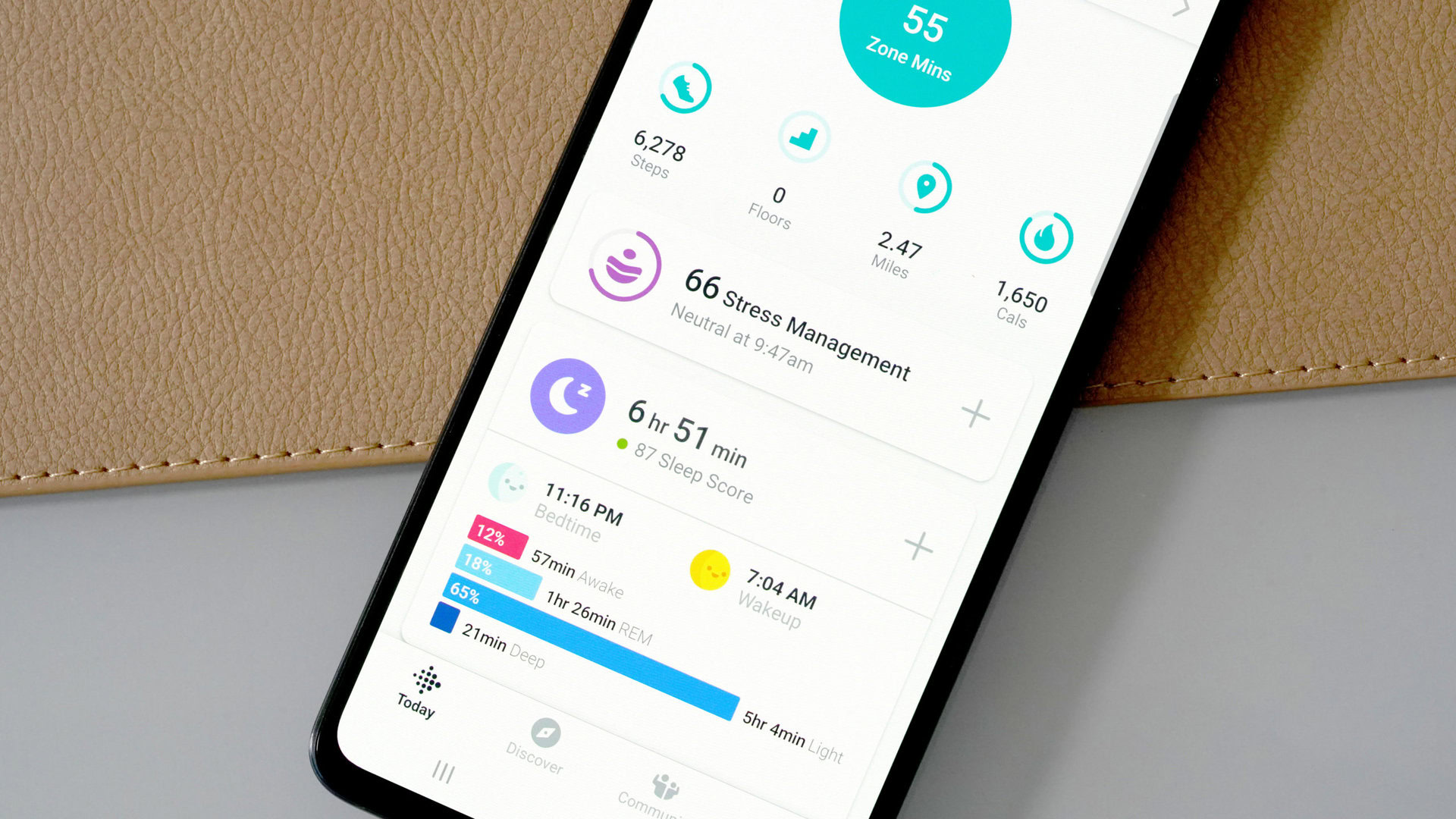
Sleep tracking also remains a highlight of the Versa 4. Fitbit’s suite for tracking and analyzing overnight data is one of the best available. Like other Fitbit devices, the Versa 4 tracks users’ sleep stages as well as total sleep time. Throughout the review, it accurately recorded my bedtimes and wake-up times and provided Sleep Scores that jived with how I felt each morning.
The Versa 4 also offers Stress Management scores, though the device doesn’t analyze electrodermal activity for signs of stress like the Sense lineup. Instead, the Versa 4 provides a score based on users’ heart rate data, heart rate variability, sleep data, and physical activity. I typically received scores in the 60s with reductions reflecting poor exertion balance (exercise vs rest), which seemed accurate.
With a Fitbit Premium membership, the Versa 4 offers further analysis for both sleep and stress data. Score breakdowns and Fitbit’s Sleep Profile program are all worth checking out while the device’s free premium trial lasts.
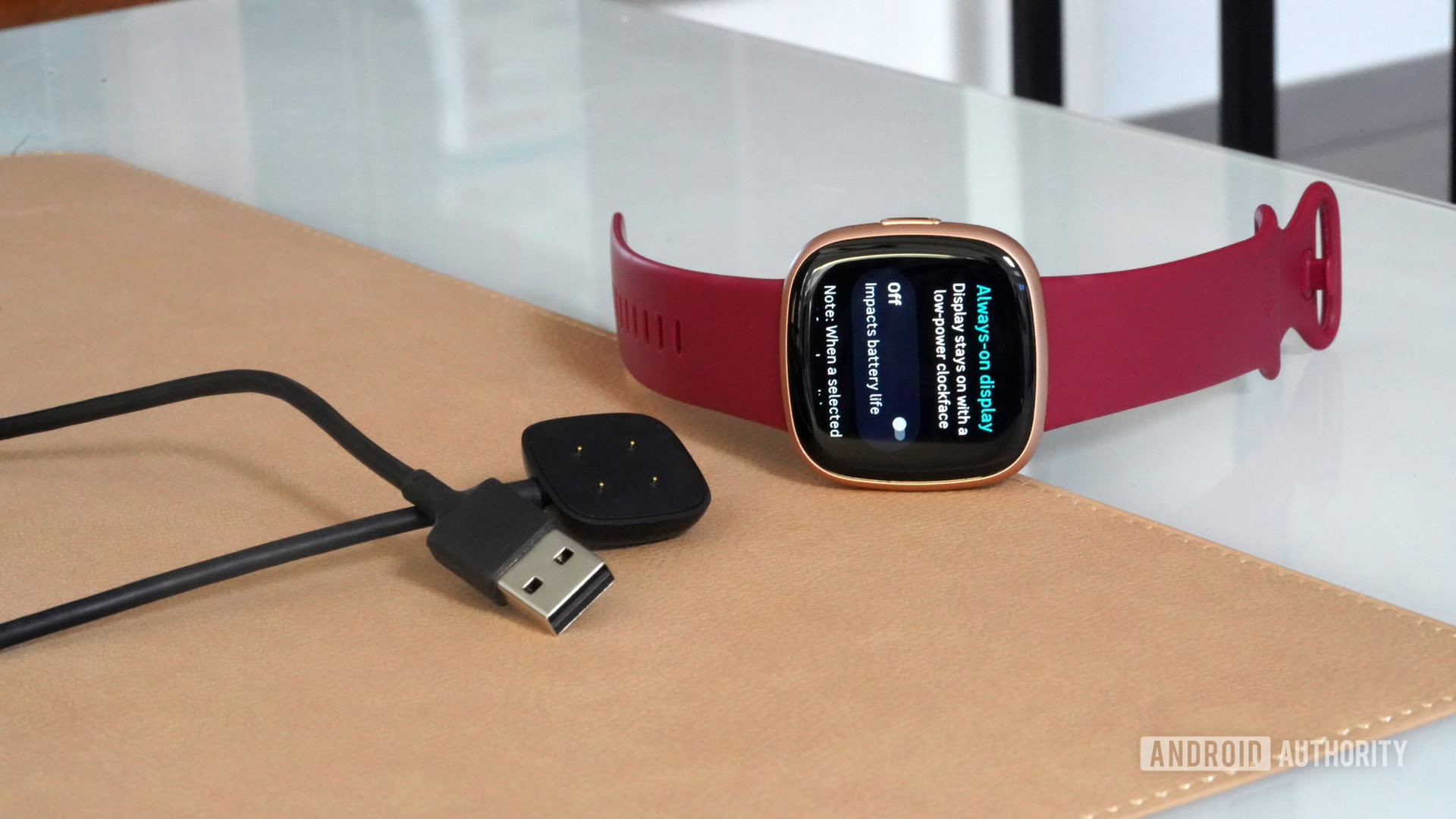
Last but absolutely not least, the Fitbit Versa 4 offers fantastic battery life. One of our biggest disappointments during our Fitbit-enhanced Google Pixel Watch review was that it was highly dependent on its charger to get through more than a single day (at best). The Fitbit Versa 4 looks to reaffirm our faith in the company’s wearables with claims of six-plus days of regular use between charges. I wasn’t able to reach quite that during my tests, but I was also pushing the Versa 4 to its endurance limit. Even with all the settings enabled (including always-on display), I easily went about four days before the first charge.
The Versa 4 easily outmatches the Fitbit-powered Pixel Watch on battery life.
When you do need to plug in, according to Fitbit, charging the Versa 4 should take one to two hours. This is a ridiculously nonspecific range, but my experience was about 90 minutes. It also only takes a quarter of an hour to charge enough for a full day of use, which is great for topping off in a hurry. The Versa 4 ships with a proprietary charging cable, though it’s also compatible with the Versa 3’s charging cable if you have that one on hand.
What’s not so good?
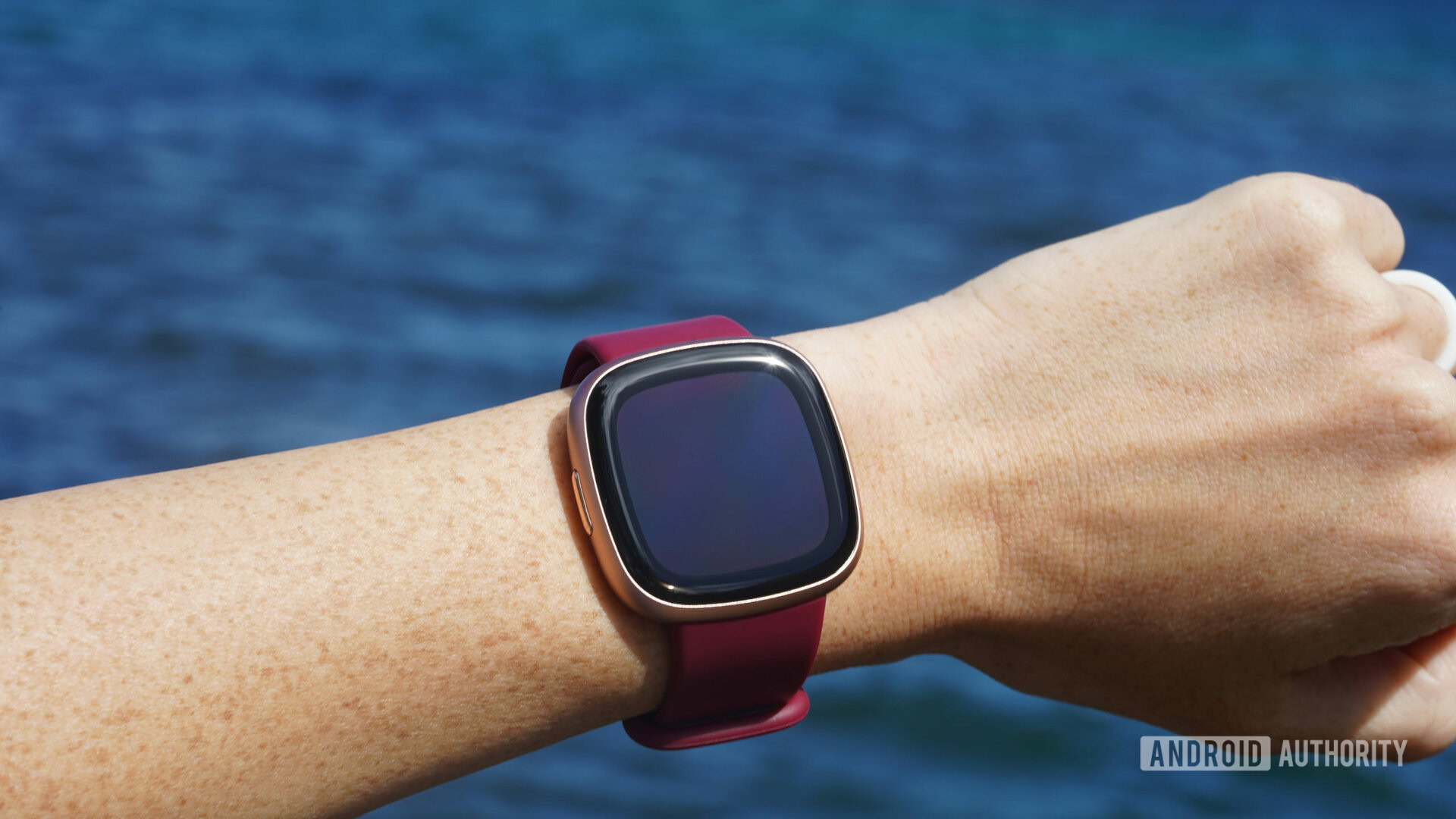
The Fitbit Versa 4 is a classic case of not knowing what you have until it’s gone. When comparing the Versa 4 vs Versa 3, the biggest shortcoming of the newer model is the questionable absence of features we took for granted on the former one. One of the oddest examples of this is the removal of Wi-Fi support. According to Fitbit, the Versa 4 contains the hardware necessary to access Wi-Fi, it’s just that the company has chosen not to make it accessible. While you can still sync your Versa 4 to your phone via Bluetooth, Wi-Fi typically makes updating much faster. In the past, it also allowed users to add music to their Fitbit smartwatch, which brings us to another abandonment.
The Versa 4 drops key features from the previous generation including Wi-Fi and third-party app support.
The Fitbit Versa 4 no longer offers any support for listening to music or controlling playback, offline or otherwise. Though I wasn’t one to store a ton of local music files on my Versa 3, I did always have at least one long run’s worth of jams on deck. More often, I used my watch to control music playback while streaming playlists from Spotify. The complete removal of any music experience or controls from a smartwatch line is a bizarre and disappointing step backward.
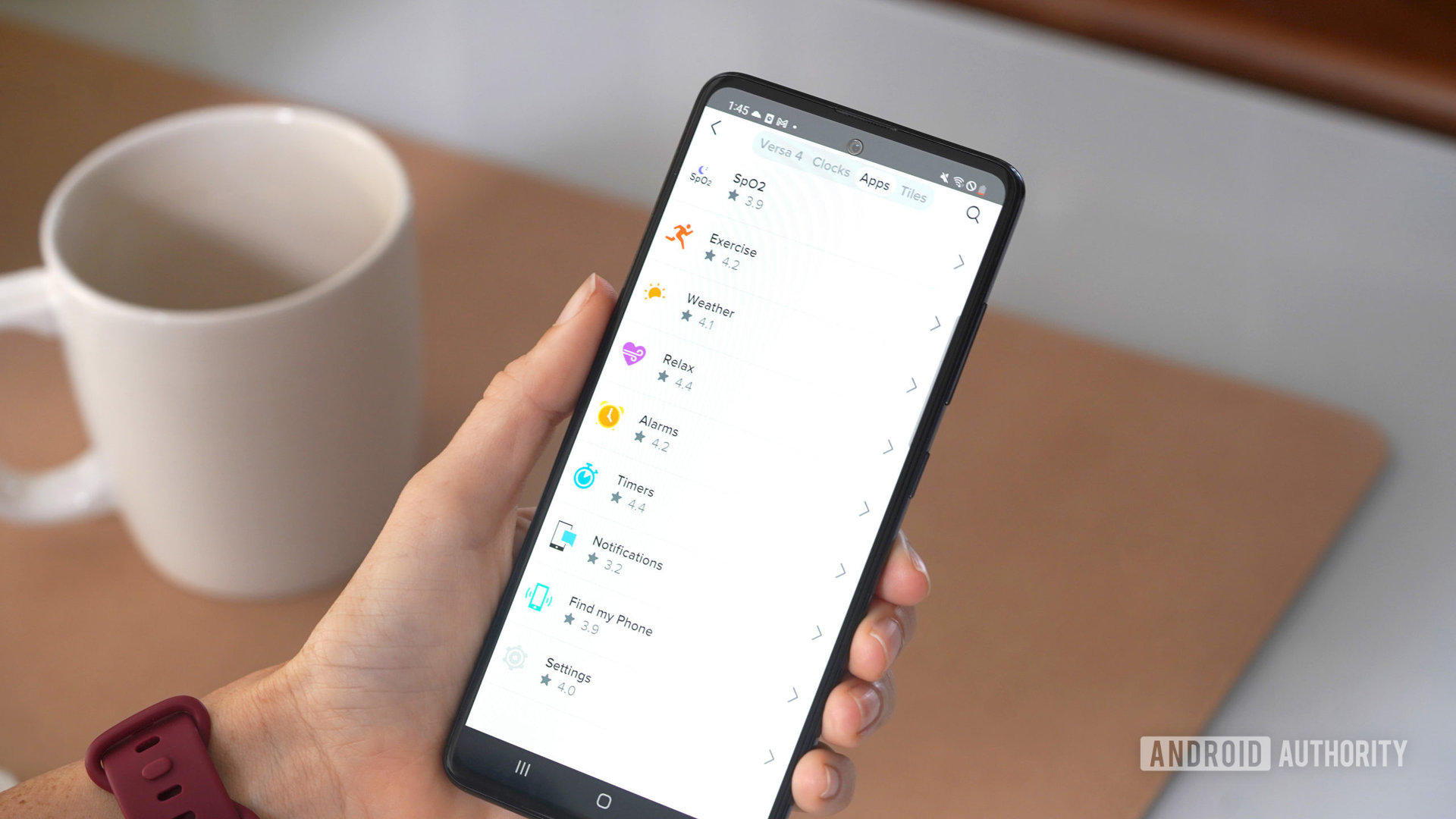
Unfortunately, it is just the first of many. Opening the Fitbit app is the fastest way to see what else is missing. The Fitbit Versa 4 only offers nine pre-installed apps and, at the time of this writing, zero opportunity to add any additional ones from third-party developers. Gone are the days of paying for your Starbucks with your rewards account or calling an Uber from your watch.
The apps available on the Versa 4 are limited to the following: Alarms, Exercise, Find my Phone, Notifications, Relax, Settings, SpO2, Timers, and Weather. With so few tools on board, it also follows that the Versa 4 doesn’t offer much in the way of tiles. These are limited to Core Stats, Exercise, Heart Rate, Main Goal, Sleep, Timers, and Weather.
While Fitbit’s app store was never much to write home about, it did feature enough key tools to round out your smartwatch experience. It also left the door open to further development down the road. On the Versa 4, you’re left with a greatly simplified toolbox and no room to expand. We were pleased to see Google Maps and Google Wallet roll out post-launch, however, it was a letdown not to see them onboard from the start. More importantly, they aren’t enough to compete with the third-party app experience on competitors’ devices.
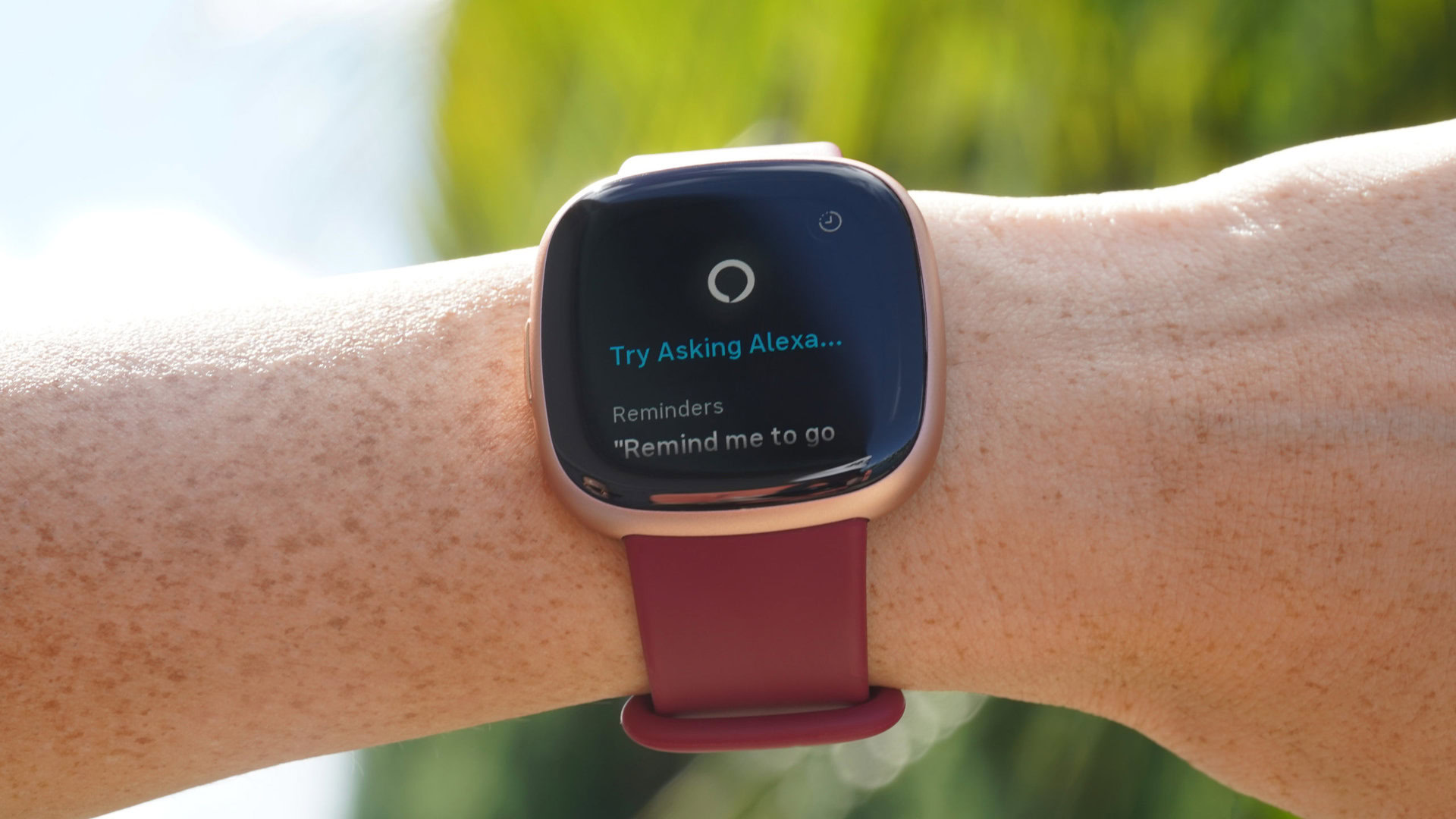
Likewise, it’s puzzling to see Google Assistant removed from the Versa 3, considering Google owns Fitbit. Google Assistant was a major selling point of the Versa 3 and is an extremely odd feature to remove from the company’s own product line. While Google Wallet Google Maps arrived in December 2022, Google Assistant is not marked for future integration. Considering Fitbit previously told us it has no plans to bring Assistant to the similarly-anemic Sense 2, it seems unlikely the cheaper watch will be graced with Google’s digital companion either.
More than anything, this seems like an arbitrary move to separate the Versa 4 from the Google Pixel Watch in terms of feature set. I thought about asking Amazon Alexa where her fellow robot went but decided not to muddy the waters. Another bizarre software change is that you now have to use your paired phone to change your watch face. While the Versa 3 allowed users to change watch faces on the device itself, it seems Fitbit disabled this feature on the newest model.
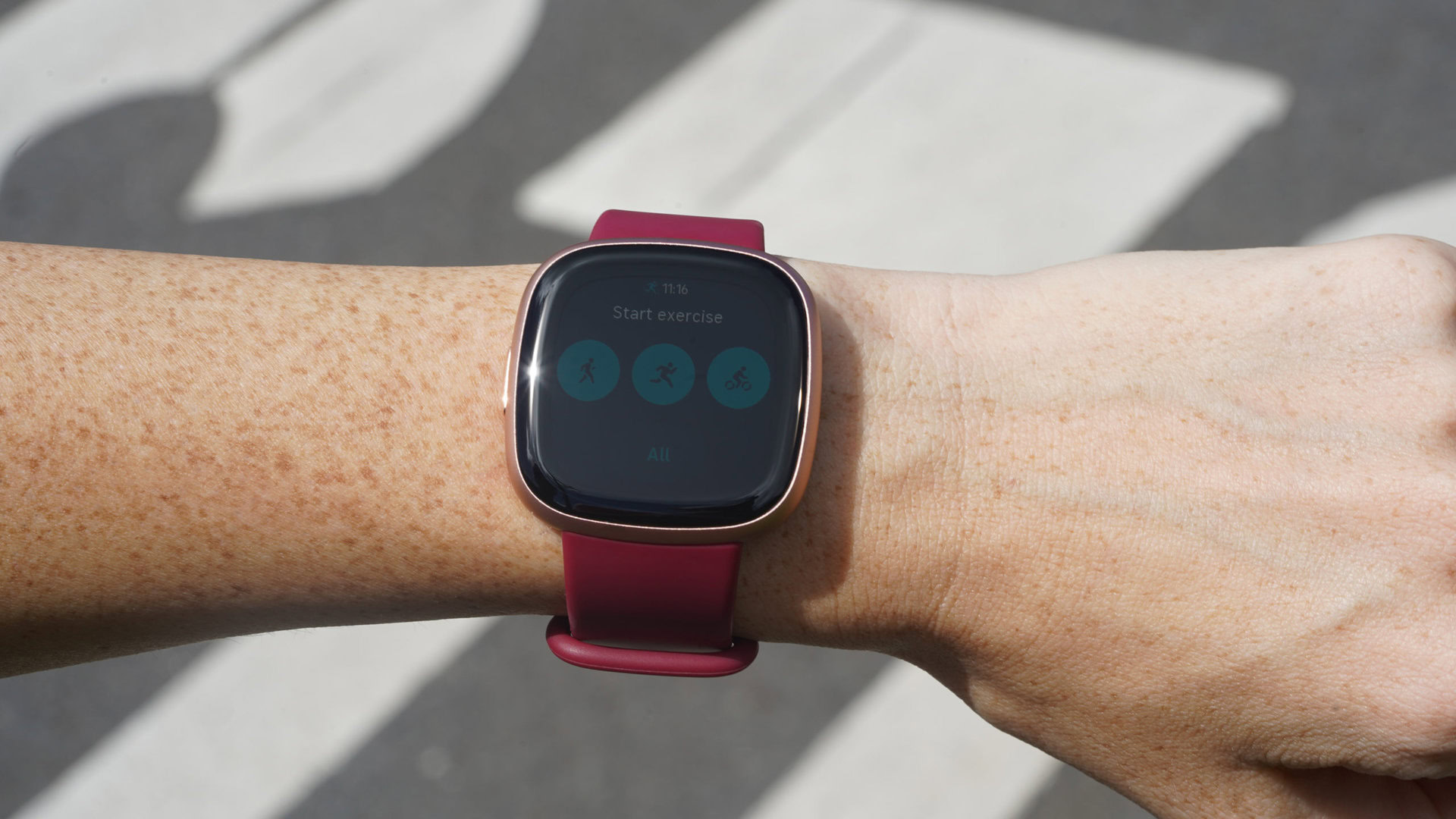
If, at this point, you’re thinking, “wow, the Versa 4 has been stripped down to a fitness tracker,” I have more bad news. Two fundamental aspects of tracking fitness, GPS data and heart rate tracking, also proved unreliable on the Versa 4.
Starting with the built-in GPS, the watch consistently struggled to find a signal at the beginning of outdoor workouts during my testing. On one occasion, I waited more than ten minutes before the Versa 4 locked on, and then it promptly dropped back off less than two minutes into the run. This is beyond frustrating both as a tester and as a regular user. On route, the Versa 4 continued to struggle. It failed to record routes similar to that of my Apple Watch SE, often placing me several meters into yards rather than on the street where I ran. Even total distances came up short.
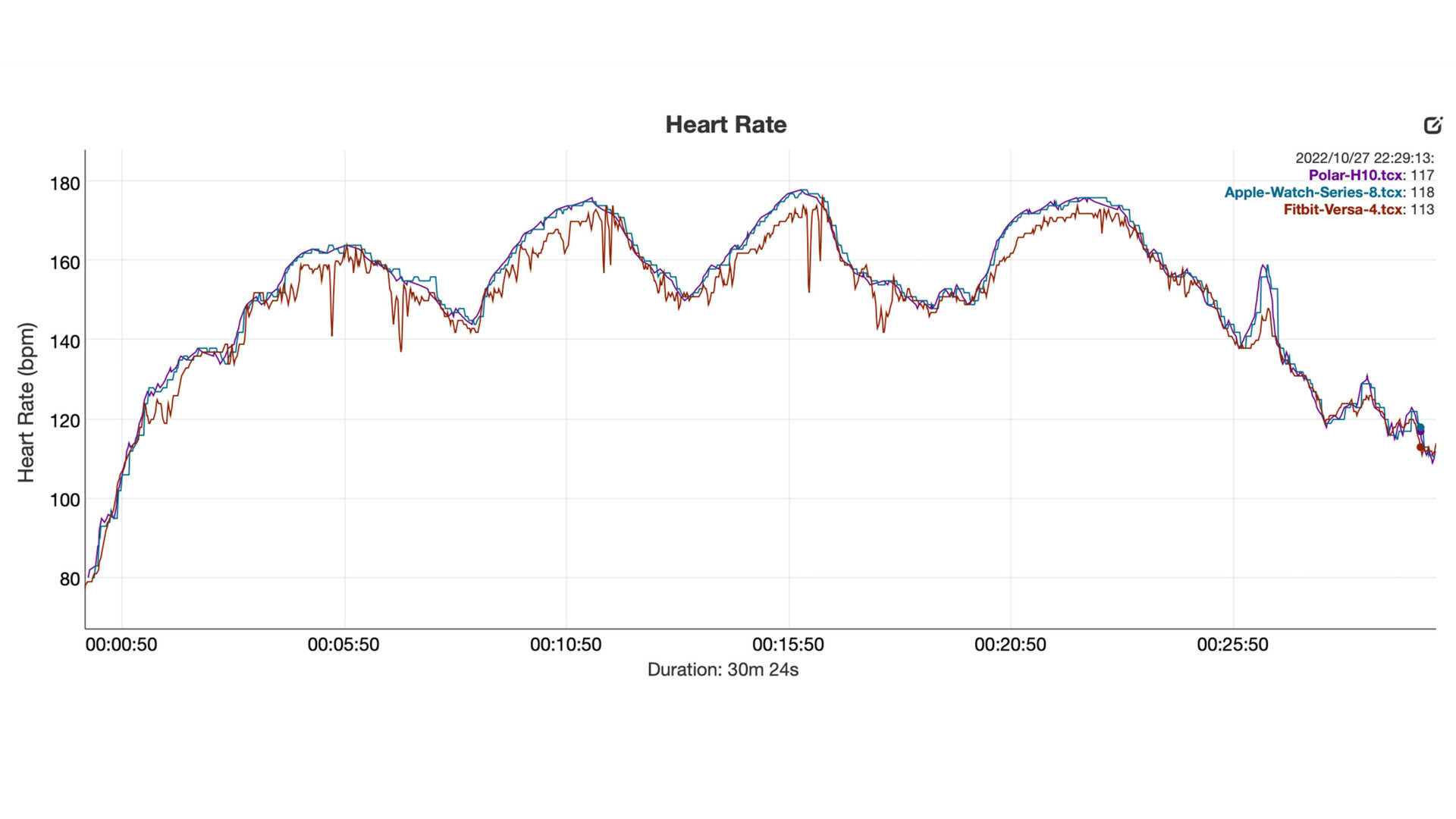
The Versa 4 frequently struggled with GPS and heart rate tracking.
In short, the Versa 4 is a smartwatch that’s been stripped down to a fitness tracker that struggled to track several important fitness metrics. Fitbit has always been the pick for those interested in casual fitness tracking. I don’t expect the company to record as advanced data as a Garmin watch, for example. However, these inconsistencies are significant and certainly warrant hesitation for anyone thinking of buying a Versa 4 solely for pinpoint-accurate distance and heart rate tracking. With the Sense 2 also showcasing inaccurate readings for heart rate and GPS tracking, our hope is that Fitbit will course-correct both devices with future software updates.
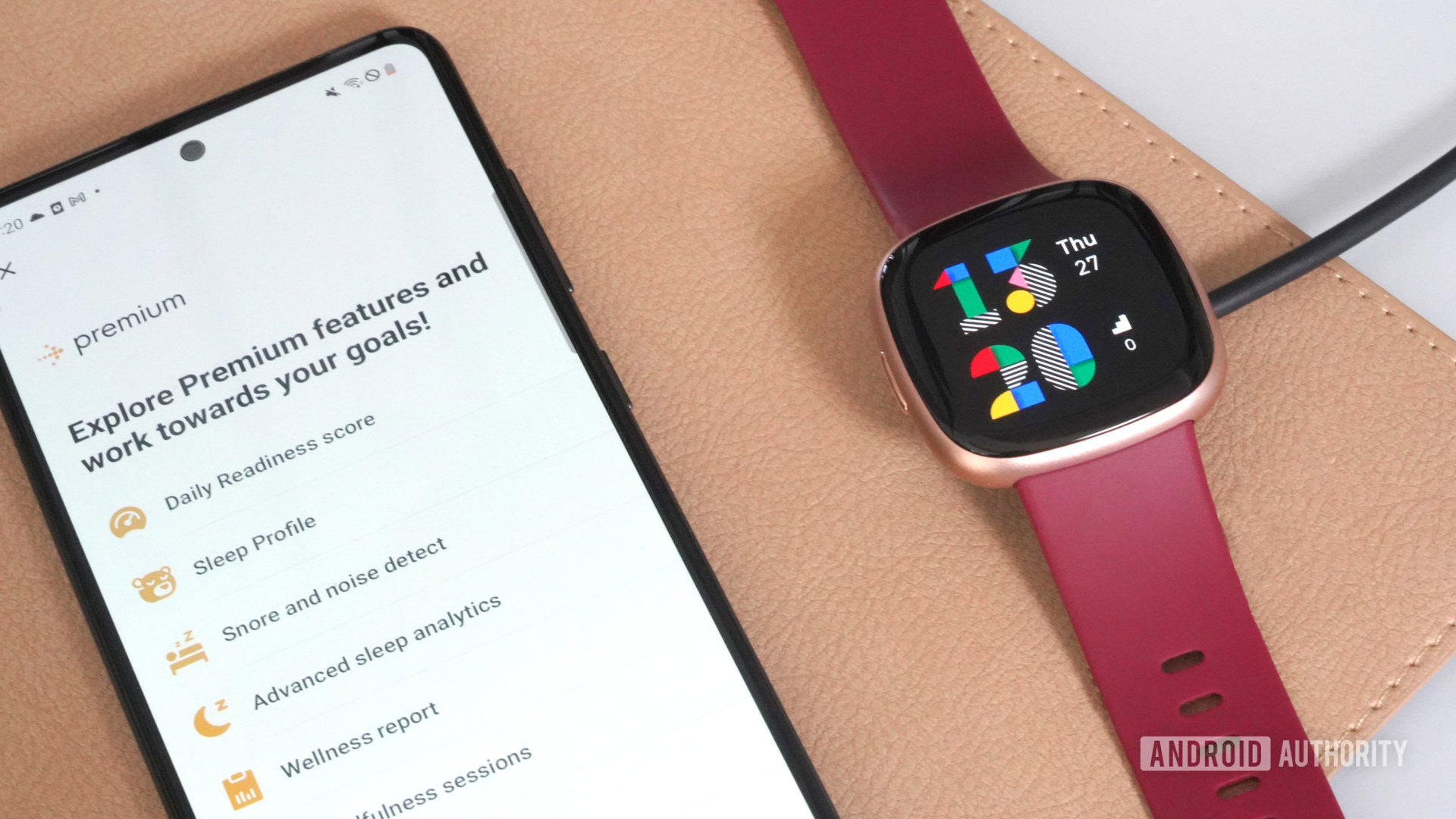
Finally, Fitbit Premium remains a thorn in the Fitbit ecosystem. In order to access some of the Versa 4’s headlining features, users will need to rely on the free six-month membership offered with each purchase. Once that time is up, Daily Readiness Score, Sleep Profile, and other advanced features will run $10 extra a month. Subscription fees on wearables are controversial, especially as these products aren’t getting any cheaper. That said, Fitbit Premium is a hardy platform with extra fitness and wellness content, deeper sleep insights, gamified challenges, recipe tips, and more. There’s value to be had, then, but you’ll still need to make peace with purchasing a $200+ device that has some of its more advanced tools locked behind a paywall.
Fitbit Versa 4 specs
| Fitbit Versa 4 | |
|---|---|
Display | Touchscreen AMOLED |
Dimensions | 38.1 x 38.1 x 11.43mm Small strap: 140-180mm Large strap: 180-221mm |
Water resistance | Water resistant to 50m |
Compatibility | Android OS 10 or higher iOS 13.3 or higher |
Smart features | Google Maps Google Wallet On-wrist Bluetooth calls Alexa built in Fitbit Pay Find My Phone Call, text, calendar, email, music control, and app notifications |
Sensors and components | Red and infrared sensors for oxygen saturation (SpO2) monitoring Optical heart rate sensor Built-in GPS + GLONASS Gyroscope Altimeter 3-axis accelerometer Ambient light sensor Wi-Fi (802.11b/g/n 2.4GHz) NFC Vibration motor Speaker Microphone |
Memory | 7 days of motion data, daily totals for past 30 days HR data at 1-second intervals during exercise, 5-second intervals all other times |
Materials | Case: Aluminum Strap: Flexible material similar to that used in many sports watches |
Colors | Black/graphite case Waterfall Blue/platinum case Beet Juice/Copper Rose case Pink Sand/Copper Rose case |
Battery | Smartwatch mode: 6+ days Lithium-polymer battery Charge time: (0-100%): two hours |
Fitbit Versa 4 review: The verdict
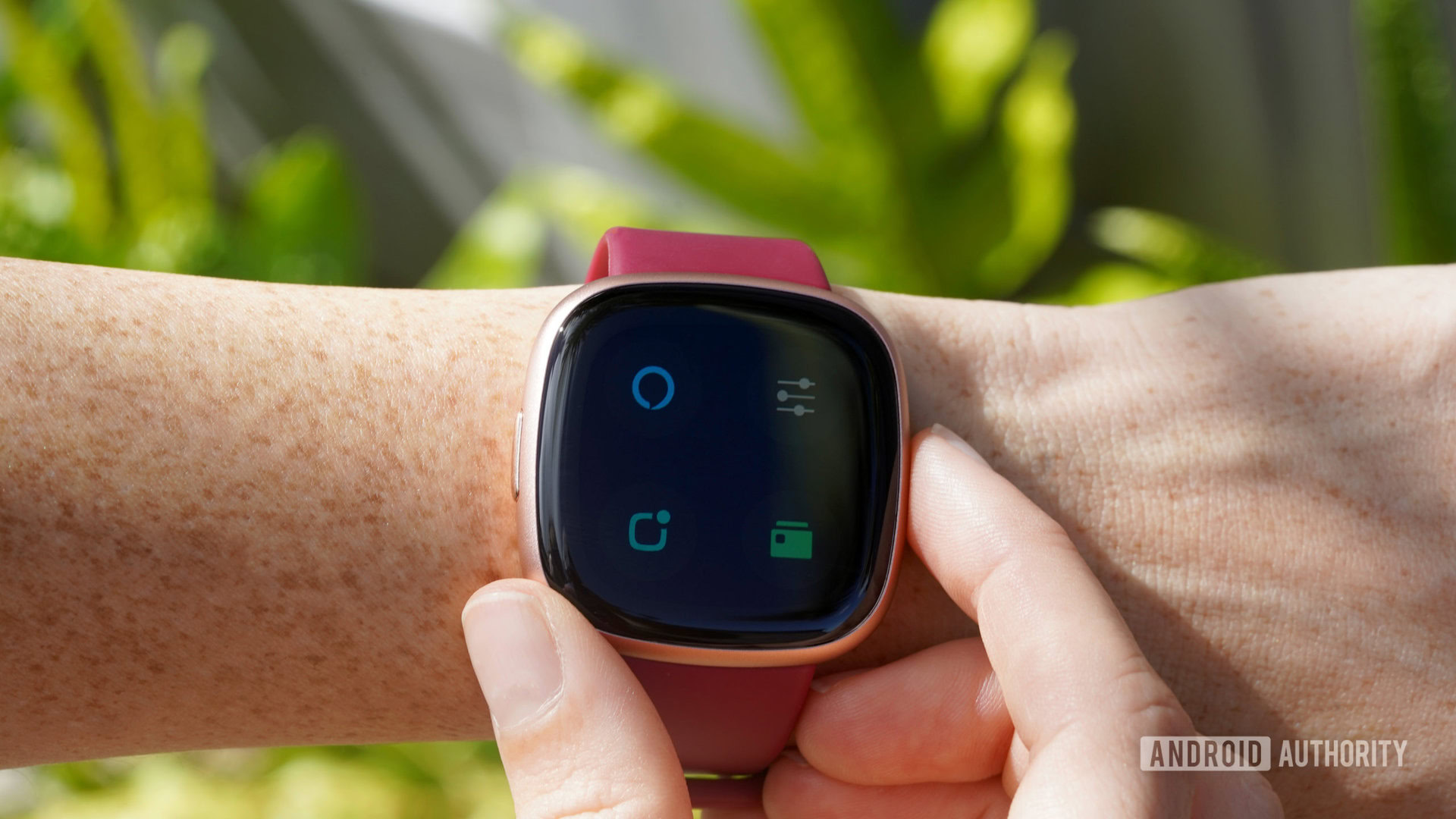
Fitbit’s smartwatch lineup shows signs of confusion. With the arrival of the Google Pixel Watch, the Sense and Versa lineups have been seemingly thrust into disarray, losing features that made them so attractive in the past in order to elevate the standing of their new sibling.
At a glance, the cosmetic updates to the Versa line are noteworthy but not monetarily valuable. Most people will forgo a lighter device if it’s also lighter in useful features. Likewise, a button is exciting, but not if there are fewer tools to navigate using it. A lack of Google Assistant, Wi-Fi, and third-party apps reverts one of our favorite smartwatches to little more than an oversized fitness tracker. However, when you throw in the unreliable GPS and heart rate sensor, the Versa 4 doesn’t feel like a great fitness tracker either — just a very average one.
The Versa 4 is a confusing step back as a smartwatch and only an average fitness tracker.
If your heart is set on a brand new Fitbit smartwatch, your best bet is the Google Pixel Watch ($329 at Amazon). It doesn’t pack all of the company’s top features, but it does offer most of them, plus integration with Fitbit’s companion app. It also features a much more comprehensive smartwatch experience via Wear OS, including access to the Google Play Store. Just be prepared to come to terms with terrible battery life.
Likewise, the Versa 3 ($158 at Amazon) remains a solid pick, especially now that it can often be found on sale. The previous-gen watch offers multiple voice assistants, an app store, Wi-Fi, plus offline listening music support. Meanwhile, the pricier Fitbit Sense 2 ($299.95 at Amazon) adds ECG monitoring and a temperature sensor, but it’s otherwise near-identical to the Versa 4 and suffers from many of the same cutbacks. The newest Sense model dropped key smartwatch features compared to its predecessor and performed poorly in terms of GPS and heart rate data.
For the outright best Wear OS smartwatch close to this price point, the Galaxy Watch 5 ($279) is the clear favorite. Samsung’s smartwatches offer robust third-party app support plus enough fitness and health-tracking features to get you started on a wellness journey. The Galaxy Watch 5’s biggest shortcoming compared to a Fitbit device is its nominal battery life on the smaller 40mm model, but overall, there’s plenty to love about Samsung’s watch, especially if you have a Galaxy phone to access some exclusive extra features.
There are also plenty of options from Garmin worth considering for the more fitness-minded. We were very impressed by this year’s Garmin Venu Sq 2 ($249), though we’d push buyers to splurge for the Music edition. The Venu Sq 2 lineup offers a beautiful display, impressive battery life, and one of the most extensive fitness tracking suites on the market. Garmin’s ecosystem is an especially strong contender for athletes who want an accurate GPS and don’t mind going light on smart features.
Despite its iOS compatibility, we wouldn’t recommend the Versa 4 for iPhone users at all. The Apple Watch SE ($269.99 at Amazon) will only run you $20 more and offers one of the best budget smartwatch experiences available. Like the Versa 4, it skips out on a few advanced health sensors in favor of a price tag that’s a total bargain compared to the top-tier model, in this case, the Apple Watch Series 8 ($399).
Overall, while we considered the Versa 3 among the best smartwatches available (and still do), the barebones Versa 4 is more of a downgrade than an exciting follow-up.

Top Fitbit Versa 4 questions and answers
The Fitbit Versa 4 has a 5ATM water-resistance rating.
Yes, the Versa 4 is compatible with iPhones running iOS 13.3 or higher and Android OS 10 or higher.
Yes! The Versa 4 equips 24mm proprietary straps making it compatible with Versa 3 bands as well as Fitbit Sense and Sense 2 bands.
Yes. The Fitbit Versa 4 features an NFC chip as well as Fitbit Pay pre-installed on the device.
The Fitbit Sense 2 features sensors compatible with the ECG and EDA app as well as a skin temperature sensor. These are not included with the Versa 4.
You can answer phone calls on the wrist with your Fitbit Versa 4 if your phone is nearby and connected via Bluetooth.